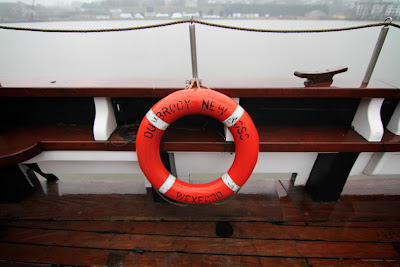The Dunbrody “Famine Ship” was a ship that carried thousands of emigrant passengers from New Ross, Ireland to America and Canada during the Potato Famine or Great Hunger. It was originally built as a cargo ship in Quebec, Canada by Irishman Thomas Hamilton Oliver in 1845. The original ship took 6 months to build, and though it was destroyed after 30 years of travel, an exact replica exists in New Ross that is still open to the public. The Dunbrody was owned by William Graves & Sons, and the first captain of the ship was named John Baldwin.
The ship could carry about 200 passengers per each six to eight week trip. It contained separate accommodations for first and second class passengers, ranging in age from two months to 76 years old over the course of the 30 years the Dunbrody was in service. First class passengers may have chosen to leave their native country in search of greater opportunity in the New World; second class passengers often emigrated because they were being evicted from their land and their landowners, in an effort to get rid of them, would pay the price of their tenants’ tickets. The cheapest tickets cost about three pounds.
Ships like and including the Dunbrody are significant to Irish history in that they carried away a quarter of Ireland’s population in 10 years. The potato blight and resulting hunger that spurred the emigration and caused the deaths of millions drove an even deeper wedge between the Irish people and their British government that the Irish felt failed to help their Irish citizens adequately (or at all). To this day, Ireland’s population has still not reached its pre-famine numbers. The emigration was also significant in that it resulted in concentrations of Irish-heritage citizens of other countries like America, Canada and Australia. These Irish-descended emigrants would contribute to their new homelands in significant ways, like fighting in the American Civil War in large numbers. In later Irish history, these groups of expatriates proved significant in their political and monetary support of Irish fighting for independence from British rule.
Some of the things that our group had the strongest reactions to were the physical conditions endured on the ship: Nathan noted that, for something serving as home to 200 passengers plus crew, the ship was tiny. Max was taken aback by the fact that passengers slept in such close proximity on the tiny below-deck bunks, and Kayleigh thought it disturbing that the animals were slaughtered right above the second-class passengers. Deanna was surprised and saddened by the fact that second-class passengers were only allowed on deck for 30 minutes each day.


No comments:
Post a Comment